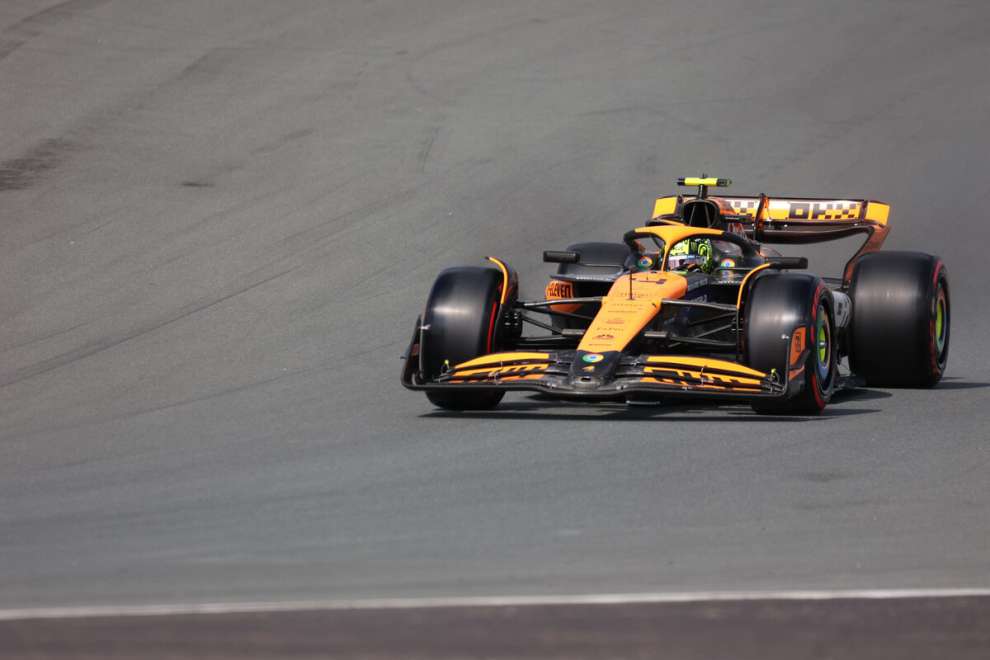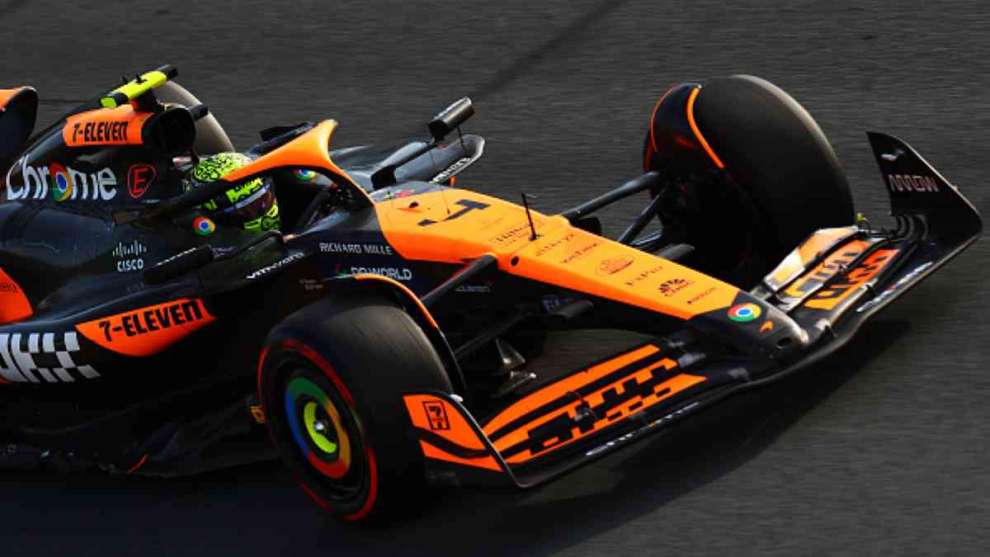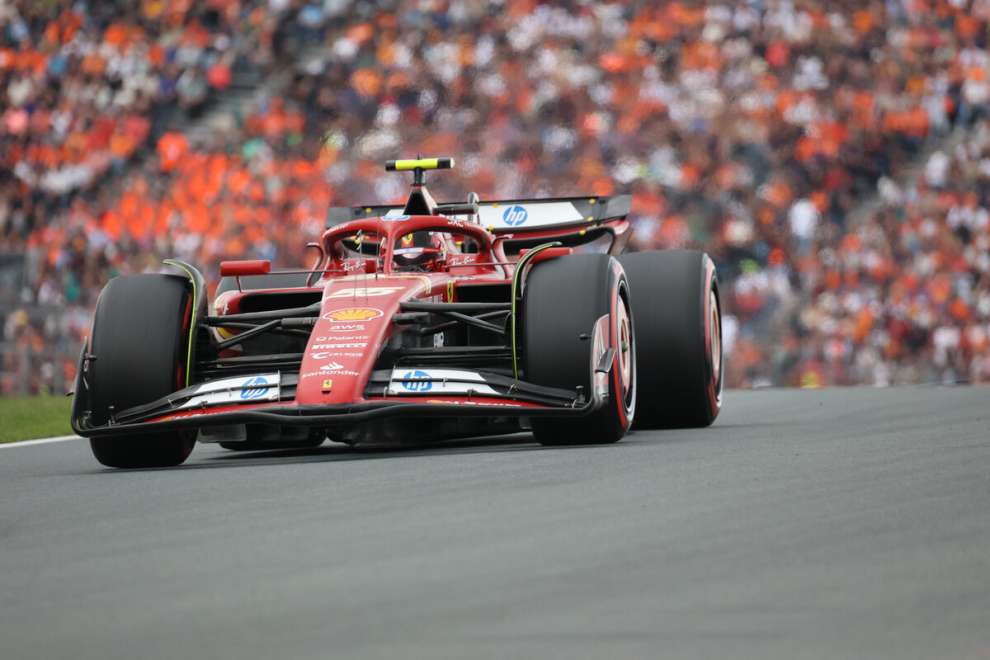By Carlo Platella
Only a few months ago it was hard to imagine that someone could edge out Max Verstappen by three tenths at Zandvoort. Lando Norris managed to knock the world champion off pole position at his home race, aboard an updated McLaren that is at its best on high-load tracks. In Holland he stands out the main quality of the Woking single-seaterwhich allows the MCL38 to stand out even in extreme wind conditions
The Zandvoort qualification
McLaren had already put itself forward for a leading role on Friday, with Norris then inflicting three tenths of a gap on Verstappen on Saturday in the fight for pole. The result is the reflection of a driver who said he was comfortable with the car all weekend. The updates that arrived in Holland perform as expected, without distorting the character of the MCL38. This is also due to the choice to approve the new components after having gained confidence that they would not compromise the balance and operating window of the car. It is the strength of a clear teamwhich without being tempted by the pursuit of the title did not unnecessarily accelerate development.
Oscar Piastri does not hide his disappointment for the third place, making self-criticism with the awareness that with this McLaren the front row was within reach. For Verstappen this opens the door to an unexpected second position, when he had already lost hope of grabbing the top-5. In Zandvoort the world champion appears constantly battling with the RB20applying numerous corrections on the steering wheel and struggling to reach the apex in turn 10.
On the decisive lap, the Dutchman then made a mistake in the 11-12 chicane, which however only partly explains the 3 tenths of a delay. The cool conditions in which the McLarens had already come to life on other occasions contributed to the gap, without considering how the variability of the gusts of wind could also be worth a couple of tenths more or less depending on the moment. Net of the many variables, however, the Zandvoort qualifying reiterated how much the Woking cars have grown in the long and medium-low speed curves, great strength of this McLaren.
The McLaren Transformation
“Zandvoort, like Budapest and Barcelona, falls into the category of circuits characterised by long, medium-distance corners, which they adapt very well to the characteristics of our machine”, Andrea Stella’s reflection with the press present at the circuit, commenting on what until a year ago was instead McLaren’s greatest weakness: “Our engineering department has turned the car around, making it more competitive in those areas where we were weak. They are also areas that you come across frequently at most circuits, which is why that’s where you really want to be competitive rather than being competitive in the high-speed corners or on the straights, which was the case a couple of years ago.”

It is no coincidence that Norris and the MCL38 had also took pole in Budapest and Barcelonaother tracks featuring numerous medium-speed corners. The competitiveness of the McLaren in this speed range explains its reduced sensitivity to the strong wind that blew on Saturday at Zandvoort, more moderate than on Friday, but still strong. In qualifying all the drivers find themselves managing cars whose behavior changes from lap to lap, but the greater grip in the many medium-slow corners exalts the McLaren in extreme wind conditions that exceed the design scenarios. Quality resulting from both the high level of downforce and the compromise with the mechanical grip of the suspension.
“The more grip you have, the more resistant you are to the windbut not necessarily because the car is designed to work in winds of that intensity, simply because you have more grip”, Stella explains. “When I talk about grip I mean some corners, because if you look at the high-speed ones, like 7, Red Bull is still by far the best car and they are gaining ground there.”
An opportunity not to be missed
Lando Norris’ Dutch supremacy tells of a McLaren that excels on high-downforce, medium-speed tracks. On the Monza bends We should see a fitter Red Bull againalso thanks to better efficiency in minimum load configuration. An awareness that spurs the Woking team not to let the potential victory in Holland slip away.

We are heading towards a race where overtaking will be prohibitive, making the starting phases cruciala context in which Norris has distinguished himself negatively on a couple of occasions, but where the team also has room for improvement in managing the tyres, clutch and accelerator. The biggest advantage for McLaren remains the possibility of playing two against one, also encouraged by the excellent pace seen in Friday’s simulations. Verstappen for his part has an extra set of hard tyres, in a race where the performance of the tyres will have to be discovered as the race progresses, considering the little data collected.
Mercedes far away, Ferrari more
The Brackley team did not go beyond fifth place with George Russell, while Hamilton suffered a bitter elimination in Q2. It is a fickle Mercedes that of Zandvoortshowing glimpses of competitiveness, but also paying for sudden drops in performance, indicative of a particularly narrow operating window. The seven-time world champion will start behind Carlos Sainz, also eliminated in Q2 with the mitigating circumstance of having arrived in qualifying without ever having tried the soft tyres. The Spaniard is paying for the time lost in free practice on Friday afternoon, which has become even more penalising in a weekend in which Ferrari appears to be in great difficulty.
Leclerc’s sixth place is a sign of this, 9 tenths behind Norris’ McLaren. The Monegasque driver also indirectly pays for the absence of his teammate in testing, deprived of a reference to improve driving and set-up, an alibi however only partial that does not justify the long delay. Ferrari is anxiously awaiting the updates that have been absent since June, but Zandvoort’s difficulties are not only due to development.

“All the new features we have brought to the car in the last two years and this year’s car have never been suited to the long slow corners, which I have insisted on several times,” Sainz commented in Austria. Words that become the reflection of a design approach that for years has led the Prancing Horse to struggle on tracks such as Zandvoort, Budapest and Barcelona, with cars whose DNA is evident a chronic intolerance for long-distance, medium-speed curves. The same ones where McLaren is building its successes.
#Zandvoort #McLarens #great #strength #Red #Bull #lost #wind

